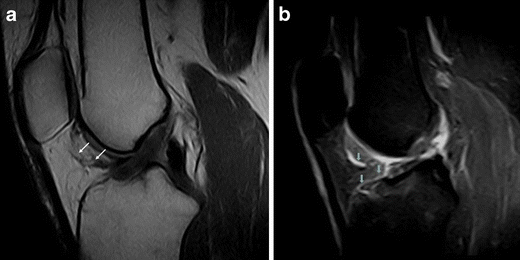Cyclops lesion (knee)



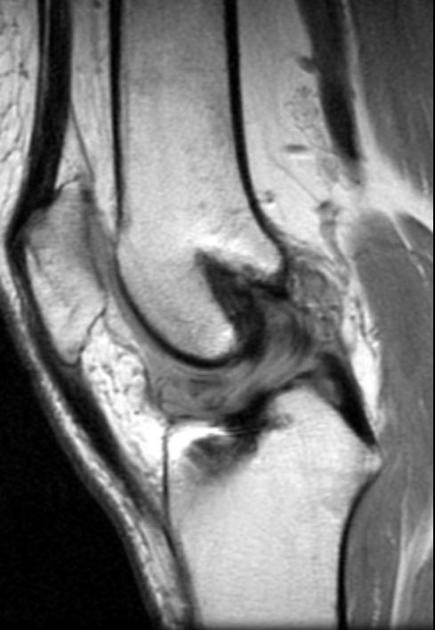

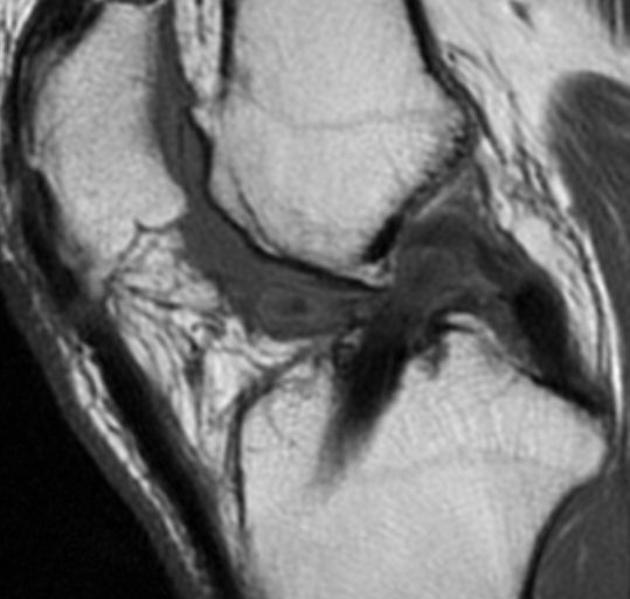
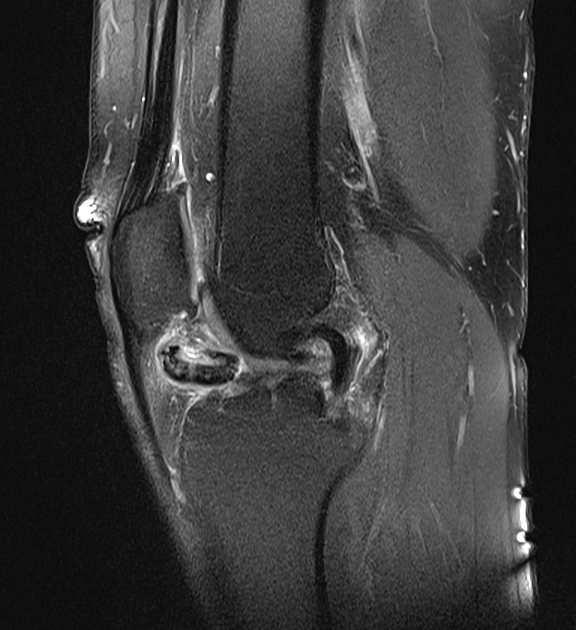

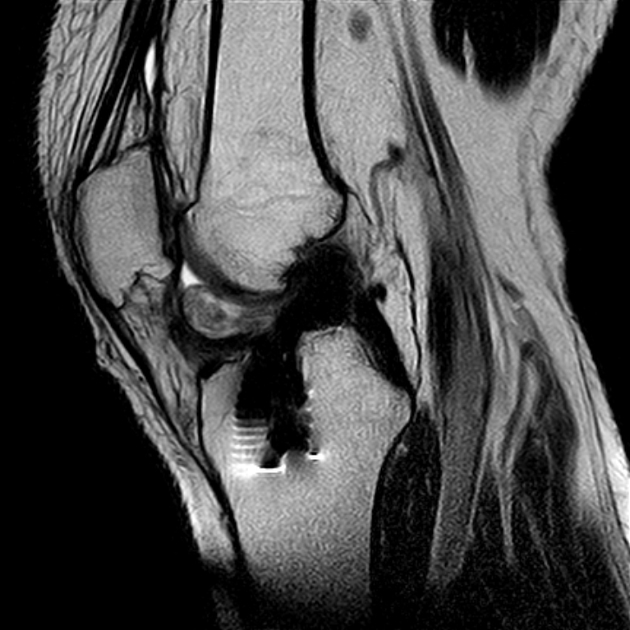
The cyclops lesion, also known as localized anterior arthrofibrosis, is a painful anterior knee mass that arises as a complication of anterior cruciate ligament (ACL) reconstruction, although has rarely been reported in patients with ACL injuries that have not been reconstructed.
Epidemiology
Cyclops lesions occur with an estimated frequency of ~5% (range 1-9.8%) of patients following ACL reconstruction. They are rarely encountered in patients who have not had ACL reconstruction but have nonetheless sustained ACL injuries .
Clinical presentation
Patients present with pain during extension of the affected knee, with an eventual audible and palpable “clunk”, occurring typically 8 to 32 weeks (16 weeks on average) after ACL repair . The term cyclops syndrome is used in patients with a post ACL reconstruction decrease in knee extension .
Pathology
The exact etiology is uncertain and may be related to gradual fraying and bunching up of remnant ACL or graft fibers, excessive fibrosis, or alternatively due to the uplifting of fibrocartilaginous tissue during drilling of the tibia for anterior cruciate ligament reconstruction, which serves as a nidus for fibrous tissue deposition. Impingement of the graft in knee extension is also postulated .
The end result, regardless of cause, is a rounded fibrous mass sitting in the anterior intercondylar notch. Pathologically, the lesion consists of central granulation tissue lined by synovium and surrounded by dense fibrous tissue.
Radiographic features
MRI
As with other internal derangements of the knee, MRI is the modality of choice for assessing the postoperative knee.
On MRI, a soft-tissue mass is seen anteriorly or anterolaterally in the intercondylar notch near the tibial insertion of the reconstructed anterior cruciate ligament. Because of its fibrous content, a cyclops lesion typically has intermediate to low signal intensity with all pulse sequences. Lesion signal is usually heterogeneous and there is variable contrast enhancement.
There are no differentiating features on MRI between symptomatic and asymptomatic lesions.
Treatment and prognosis
Treatment is arthroscopic excision.
History and etymology
The lesion was so named because of its bulbous appearance and characteristic focal areas of reddish-blue discolouration (from venous channels) that resemble an eye at arthroscopy.
Differential diagnosis
- nodular synovitis
- localized intraarticular giant cell tumor of the tendon sheath
See also
Siehe auch:
- fibrotische Veränderungen des Hoffa'schen Fettkörpers nach Arthroskopie oder Kniechirurgie
- traumatische Veränderungen des Hoffa'schen Fettkörpers
- Arthrofibrose
- vordere Kreuzbandplastik
und weiter:

 Assoziationen und Differentialdiagnosen zu Zyklopsläsion:
Assoziationen und Differentialdiagnosen zu Zyklopsläsion:
